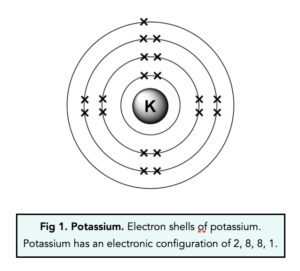Electronic Configuration (GCSE Chemistry)
Electronic Configuration
Electronic Configuration
Working out the Electronic Configuration
As we mentioned in a previous tutorial, a cloud of electrons surround the nucleus. These electrons moved in different energy levels, which we can call electron shells.
We can work out the arrangement of electrons into shells. This is called the electronic configuration.
- Electrons occupy the closest shell first. Electrons will occupy the shell closest to the nucleus before occupying the next shell. The shell must be full before another shell is occupied.
- The shells hold different numbers of electrons. The first shell holds up to two electrons. The second and third shells can hold up to eight electrons.
- The electronic configuration can be written. We can write the electronic configuration by writing the number of electrons in each shell, separating the numbers with commas. For example electronic configuration of potassium is 2, 8, 8, 1.

Relating the Electronic Configuration to the Periodic Table
- The number of notations determine the period. For example the electronic configuration of potassium is 2, 8, 8, 1. There are four notations, therefore potassium is in period 4.
- The number of the last notation determines the group. The last notation for the electronic configuration of potassium is 1. Therefore potassium is in group 1.





Still got a question? Leave a comment
Leave a comment